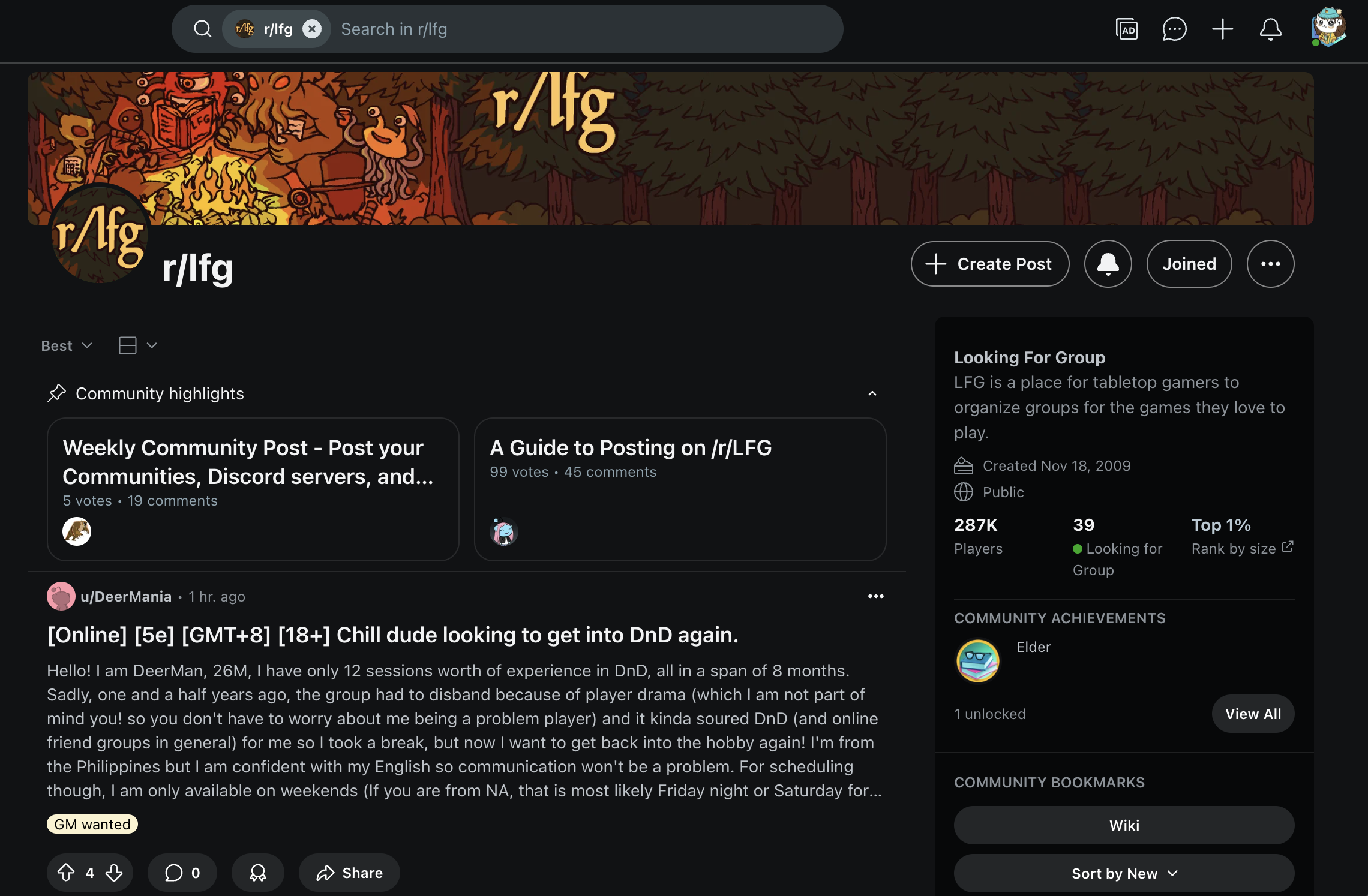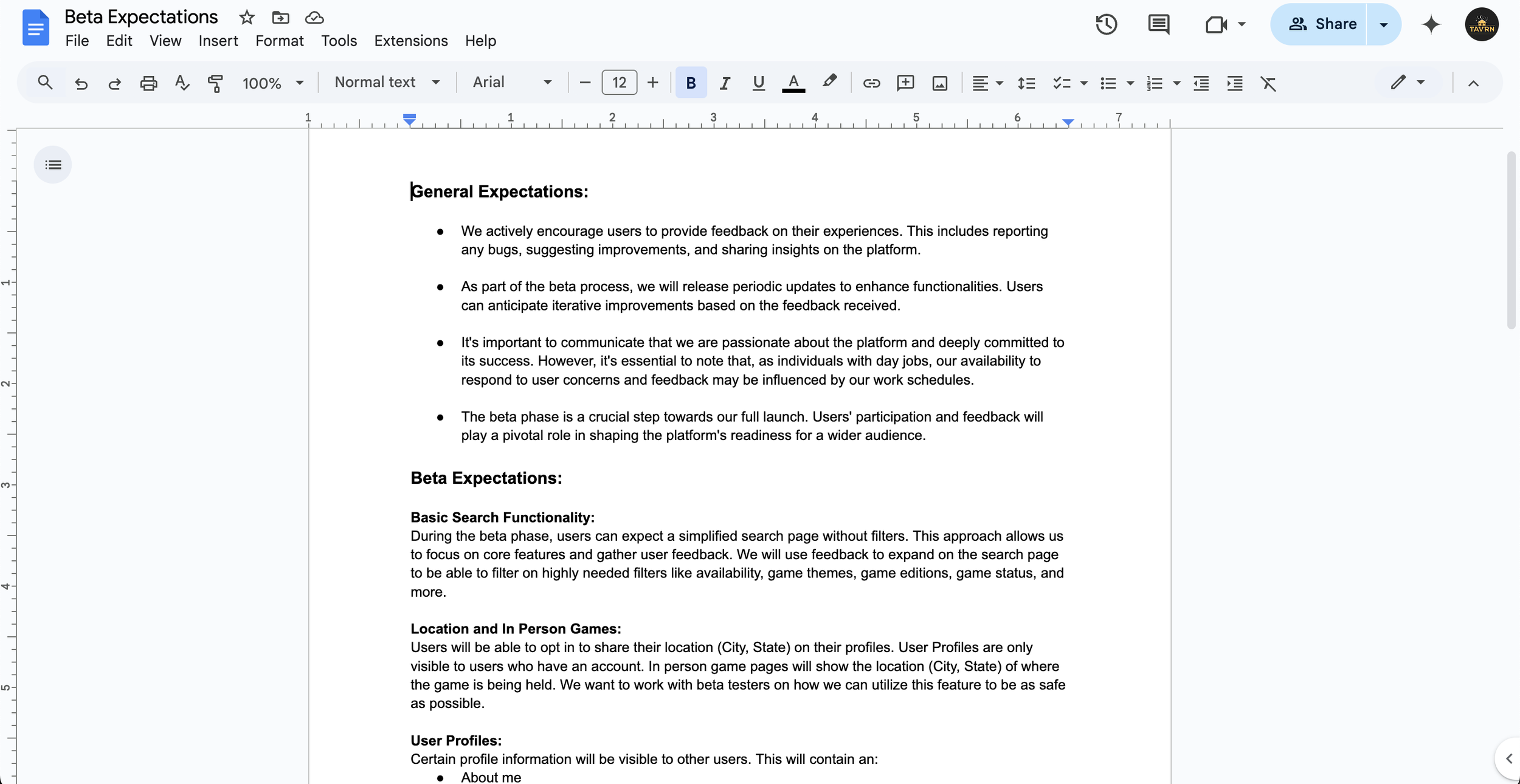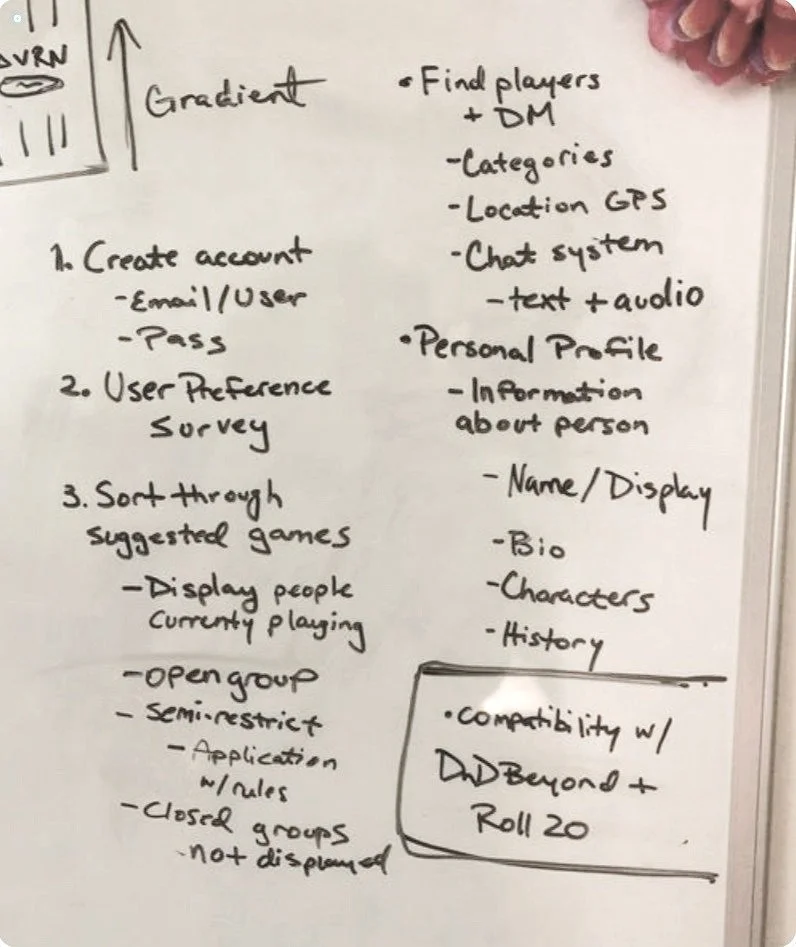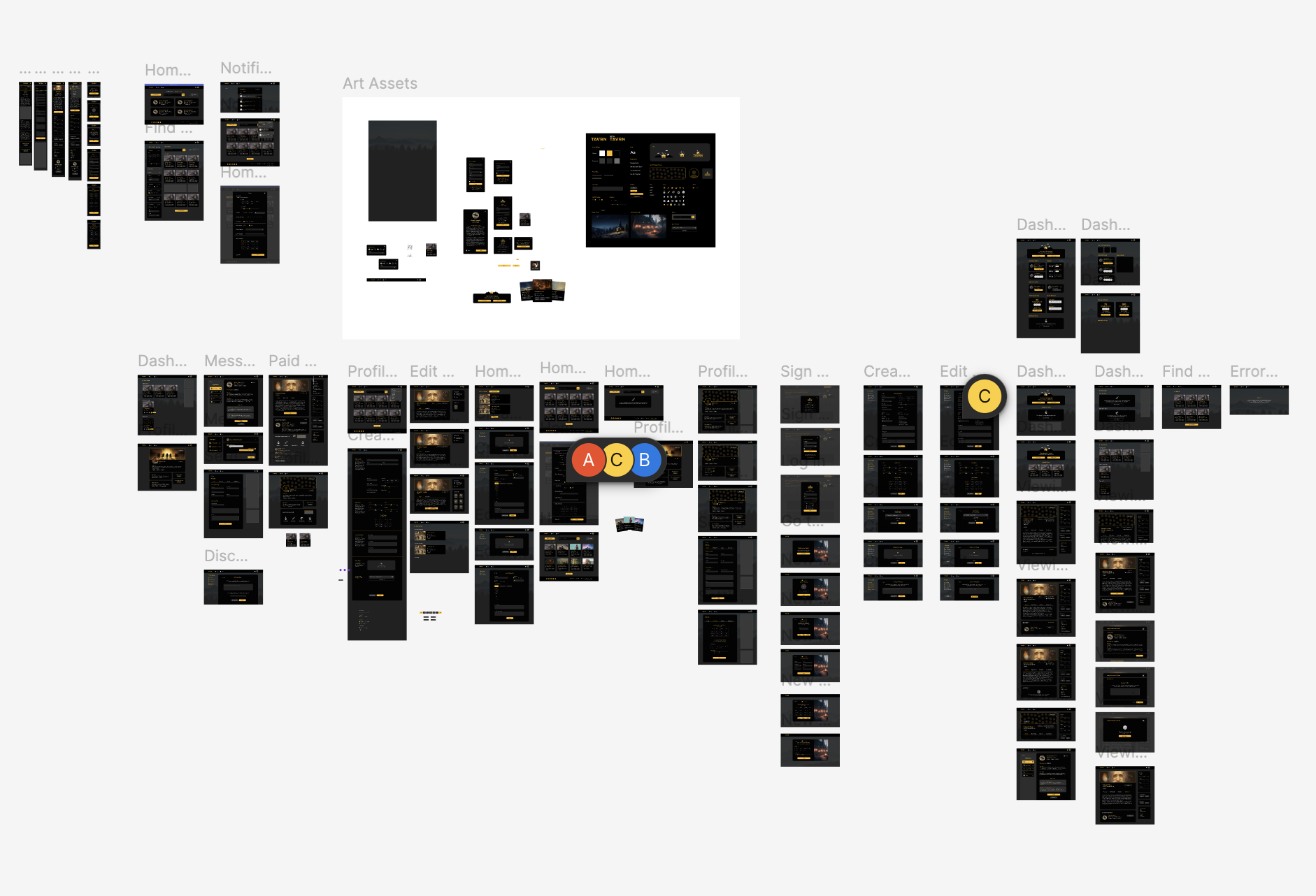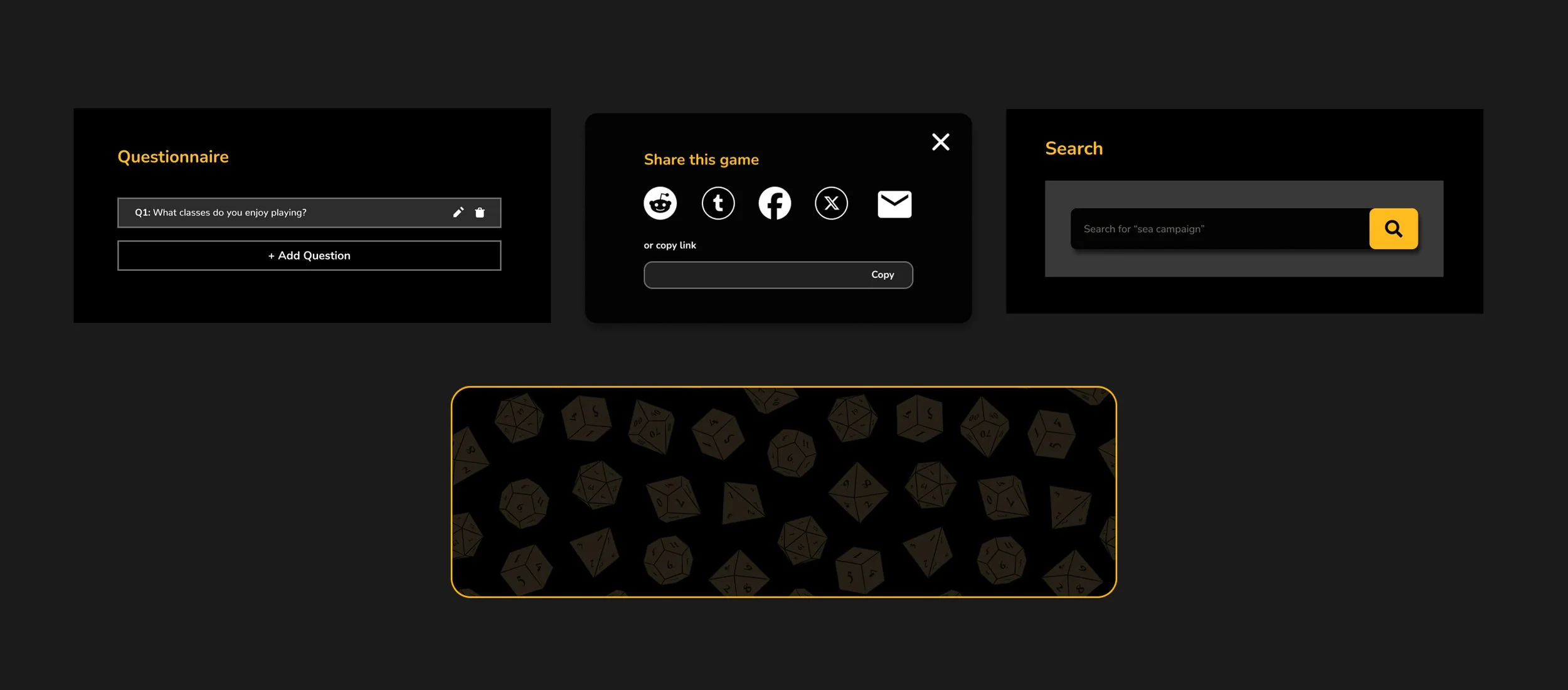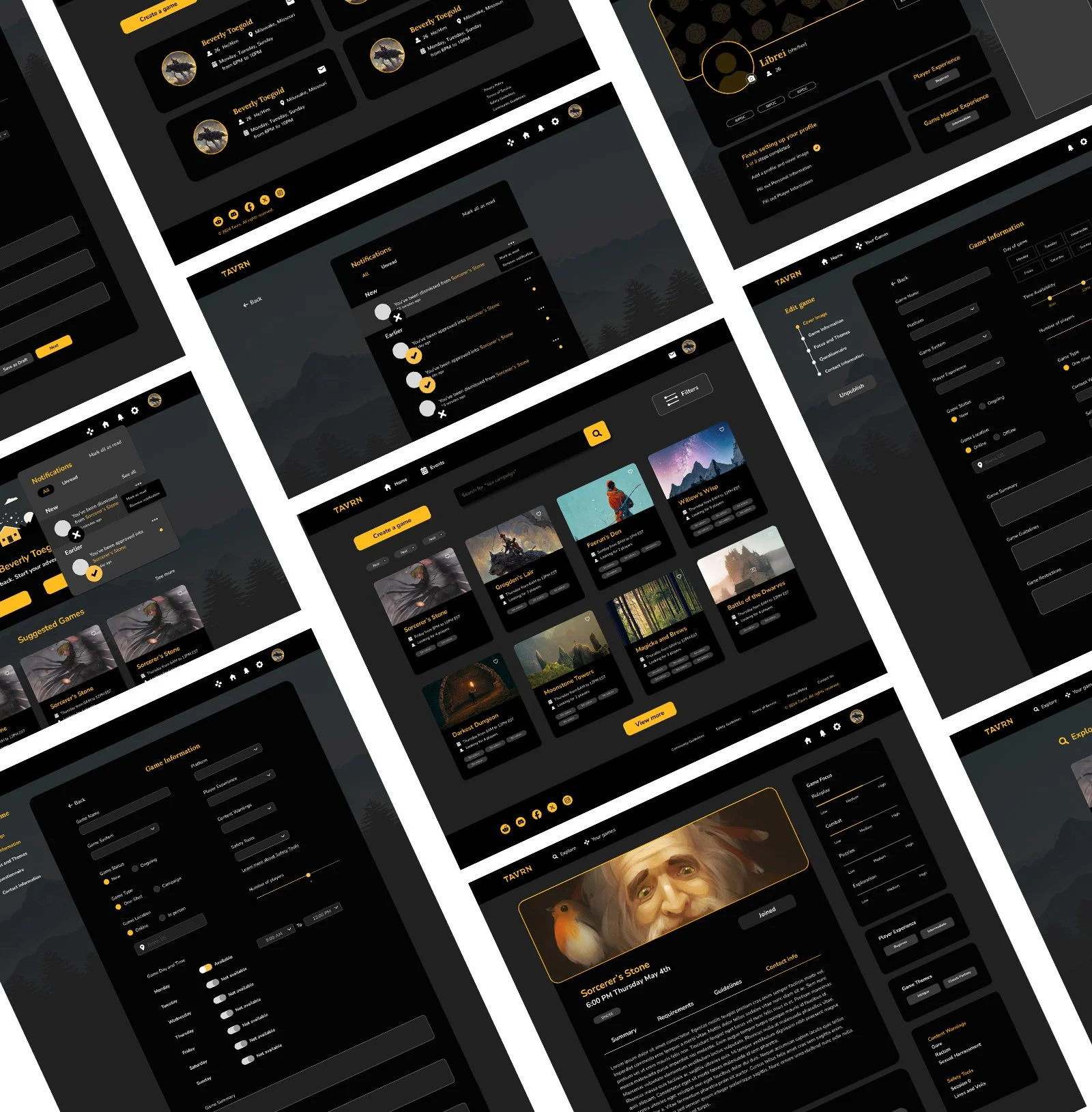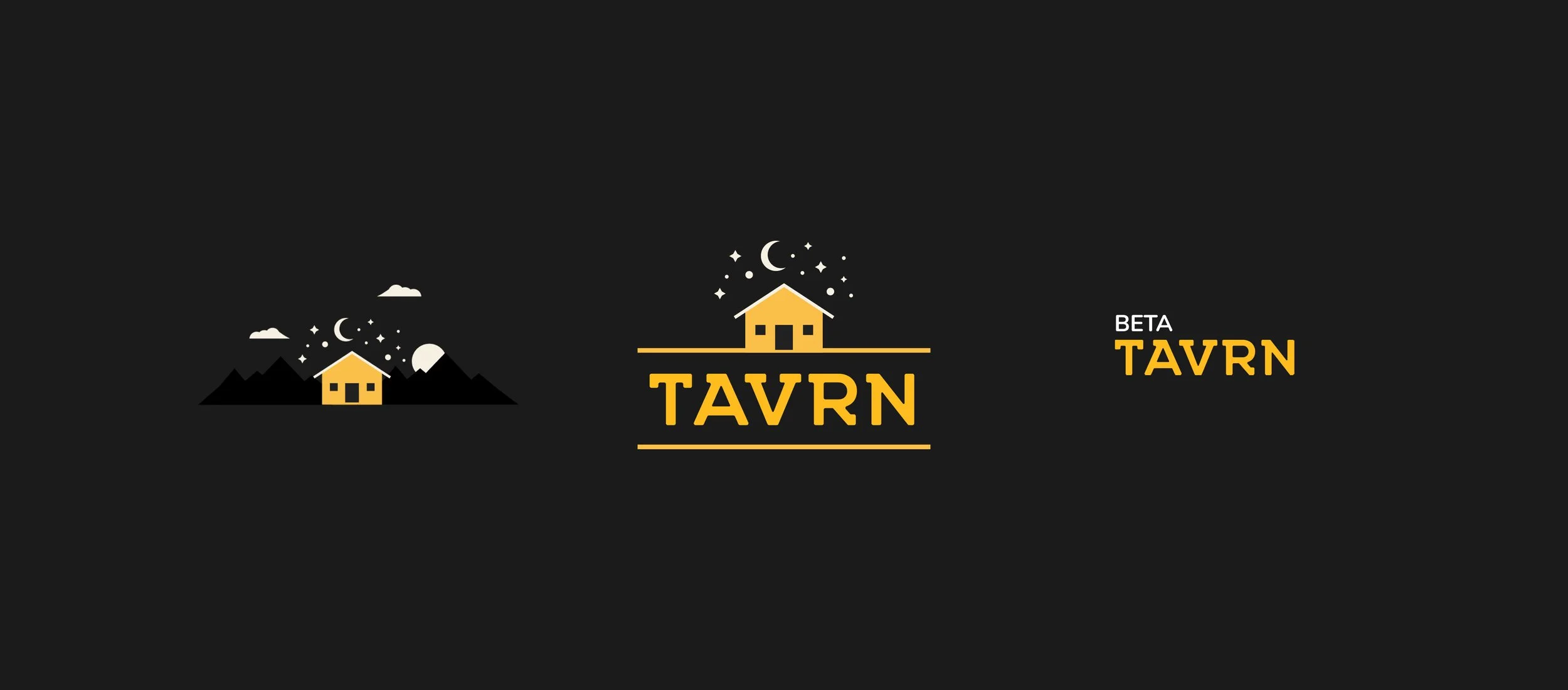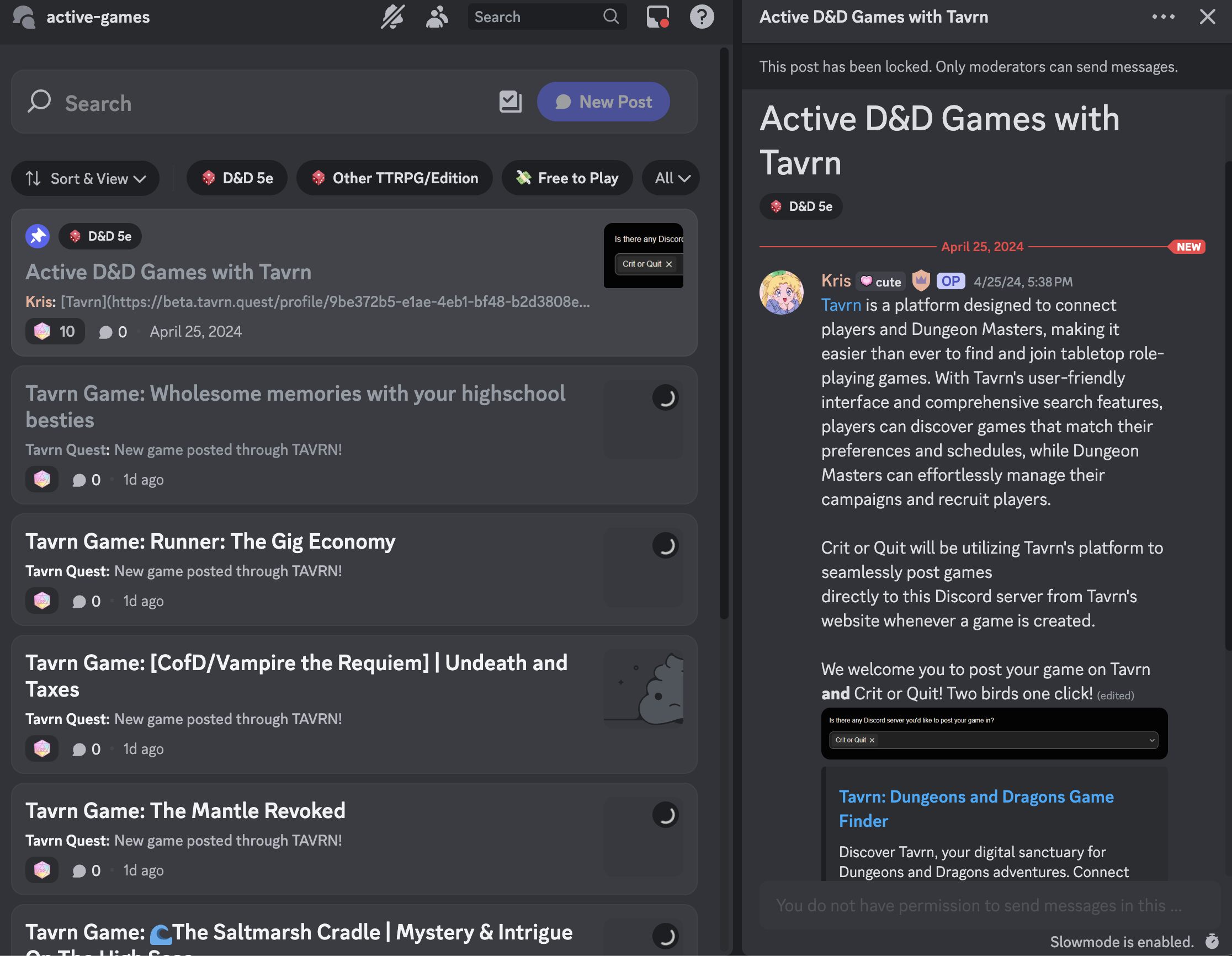Tavrn: Creating a TTRPG Game Finder
Problem
Tavrn started from something I kept running into myself—I just wanted an easy way to find people to play tabletop role play games (TTRPG) with. Platforms like Reddit and Discord have tons of communities, but finding the right group often felt overwhelming or time-consuming. I’d bounce between threads or scroll through servers and still feel like I wasn’t getting anywhere.
I started thinking: what if there was a space built specifically for discovering games and jumping in quickly—without the noise or the digging?
Approach
As the founder and product designer, I set out to build Tavrn around that exact idea: make it simple and fast to find a group, join a session, and start playing. I designed clean, intuitive flows for everything from onboarding to browsing open games—always with the goal of cutting down the time between “I want to play” and “I’m in.”
I focused on functionality first: clear navigation, quick filtering, and a lightweight UI that supports the core task—finding the right game with the right people. Tavrn isn’t trying to replace existing platforms; it’s meant to fill in the gap. It’s the tool I wish I had when I was looking for a place to jump in and just play.
View Website
Role:
Founder
Product Designer
Tools Used:
Figma
Adobe Illustrator
Adobe Photoshop
Scope:
Research
Branding
UI UX
Community engagement
Marketing
Timeline
2023 - Present
As a Dungeons & Dragons player, I was excited to join a game—but frustrated by how difficult it was to find one.
I scrolled through Reddit’s /lfg, Discord servers, and Facebook groups only to find incomplete listings, slow replies, or dead threads. Even when I did find a game, I had to write a whole bio from scratch and apply via a Google Form, hoping someone would respond.
The tools for playing D&D were great. The tools for finding games? Not so much.
I was the creator, researcher, and lead designer on the project. Working closely with a small development team, I helped bring Tavrn from an idea to a living product.
My responsibilities included conducting user research, developing the product strategy, designing the user experience and interface in Figma, establishing the brand identity, and leading the marketing efforts—from crafting launch copy to managing social content.
To build Tavrn, I began with extensive research into how people were currently finding tabletop games.
I explored Reddit threads, Discord communities, Facebook groups, and Google Forms used by DMs (Dungeon Masters) to recruit players. I interviewed both players and Dungeon Masters, looking for patterns and pain points. Across the board, users expressed frustration at how disjointed and informal the process felt.
Players were tired of reintroducing themselves every time they applied to a game, and DMs frequently felt overwhelmed by vague applications or no-shows. Safety tools like “Lines & Veils” and content expectations were rarely included, despite being valued by most players. Through this research, it became clear that what the community wanted was structure, clarity, and a centralized hub that respected their time and effort.
I wanted Tavrn to feel like a virtual tavern—cozy, warm, and familiar.
It needed to strike a balance between fantasy immersion and modern UX clarity. From color palette to layout, the experience was designed to echo the vibe of sitting in a candlelit inn, waiting for your party to assemble before an epic quest.
The first version of Tavrn included an explore page where players could browse games using robust filters like timezone, game system, theme, and availability.
For DMs, we built a dashboard to manage applicants, view player details, and approve or reject with ease. We also integrated features like timezone conversion, a simple events system, and a section for safety tools like X-cards, content warnings, and play expectations.
A major growth milestone was our partnership with Crit or Quit, a well-known tabletop Discord community.
We built an integration that allowed games created on Tavrn by Crit or Quit DMs to automatically post into their server. This reduced friction, extended game visibility, and helped drive user signups directly from the community.
By bridging the gap between Tavrn and communities like Crit or Quit, we made it easier for games to be discovered and players to apply with confidence. Dungeon Masters saved time formatting listings, and players felt more comfortable knowing the games came from a vetted, trusted group.
Roadblocks and Lessons Learned
DMs Were Dropping Off
Early on, we noticed a problem: DMs were posting games, but never returning to approve applicants.
It wasn’t a product problem—it was a habit problem. So I added scheduled email reminders and worked on creating feedback loops to reward return visits for a future update(like reviews and endorsements).
Lesson: Functionality is nothing without retention. Your product needs to bring people back intentionally.
Messaging System: An Afterthought
We launched without a messaging system—big mistake. Players had no way of messaging their DM if they'd been accepted and vice versa.
It was a turning point in the design process. We prioritized on building a messaging system, but in the meantime required game applicants and DM's to supply their Discord handles so that there was some means of communication between the two parties.
Lesson: Communication tools aren’t “extra.” They’re essential infrastructure.
Mobile friendly
We also learned that mobile users accounted for more than half of our visitors, prompting a reevaluation of the mobile UI and navigation.
Features like filters, application buttons, and profile editing needed to be just as seamless on a phone as they were on desktop. Thankfully the design components that were created for desktop were very easy to adjust to a mobile interface.
Lesson: Planning ahead for components to look seamless on both desktop and mobile will save time in the future.
Within the first four months of launch, over 600 users joined Tavrn.
Dozens of games were posted, applied to, and played. The platform began generating its own word-of-mouth growth as more users realized how much easier it was to find compatible games without the usual forum clutter. Our Discord integration and event listings helped us stay connected to the community and informed our next updates, which were guided by direct user feedback and feature requests.
Tavrn is actively evolving.
We’re currently working on a dashboard for easier game management for players and Dungeon Masters. It’s been incredibly rewarding to build something that makes tabletop gaming more accessible, social, and fun—and there’s so much more to come.


